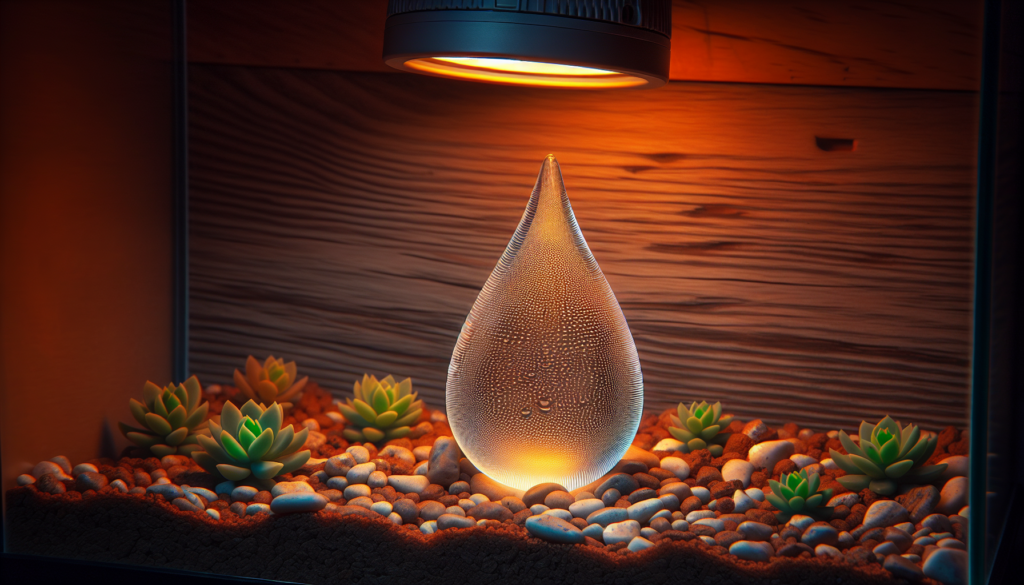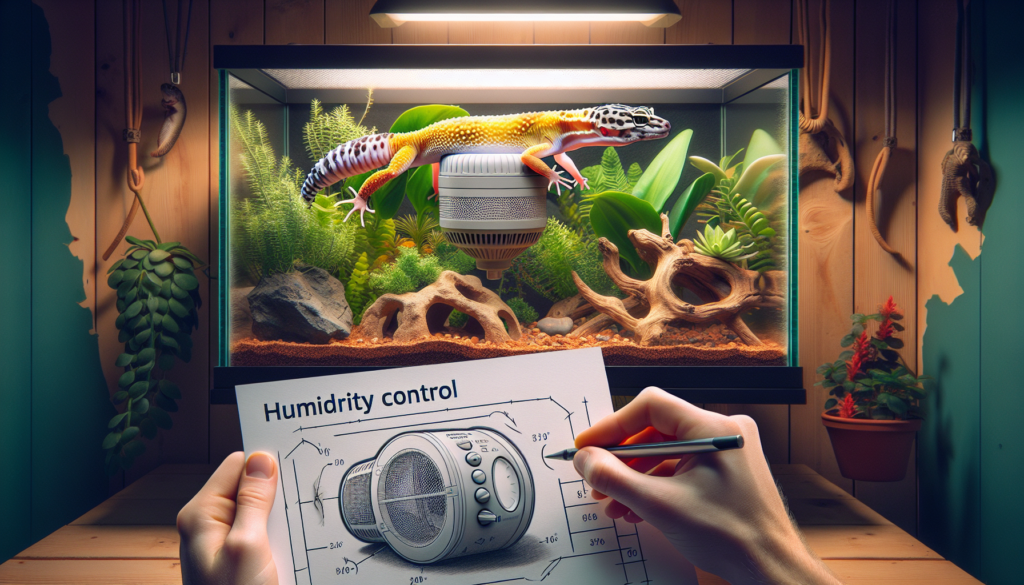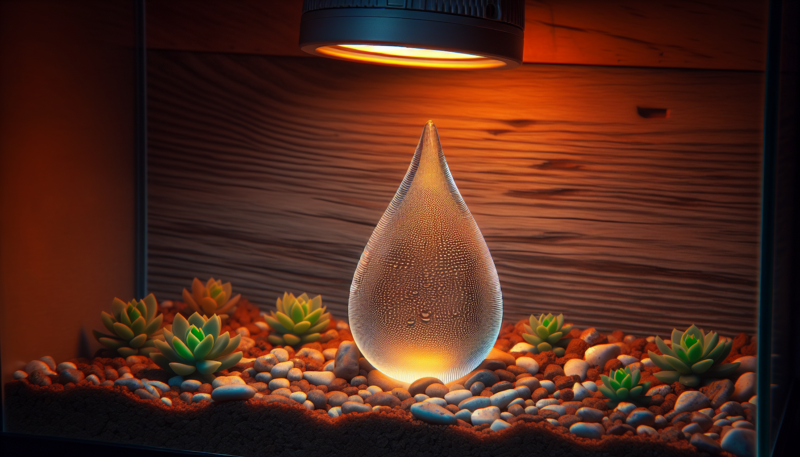Do you own a leopard gecko and are struggling to maintain the ideal humidity level in their tank? Don’t worry, we’ve got you covered! In this article, we will guide you on how to effectively lower the humidity in your leopard gecko tank, ensuring a comfortable and healthy environment for your beloved pet. By following some simple steps and implementing a few key strategies, you’ll be able to create the perfect habitat for your leopard gecko in no time. So, let’s get started!
Introduction
Leopard geckos are fascinating pets that require specific care and attention to thrive in captivity. One crucial aspect of their care is maintaining the proper humidity levels within their tank. High humidity can have negative effects on leopard geckos, so it’s essential to understand how to lower the humidity in their tank effectively. In this article, we will explore the different factors that contribute to high humidity, the importance of controlling humidity, methods to monitor and lower humidity levels, and the ideal habitat conditions for leopard geckos.
Understanding Leopard Gecko Habitat
Before diving into how to lower humidity levels, it’s crucial to have a good understanding of the ideal leopard gecko habitat. Leopard geckos are native to arid regions, primarily found in Afghanistan, Pakistan, and India. Therefore, their tank should replicate these arid conditions to provide a comfortable living environment.
Leopard Gecko Tank Requirements
When it comes to leopard geckos’ tank requirements, a few factors come into play. Firstly, you’ll need an appropriately sized tank. A 10 to 20-gallon tank is suitable for one leopard gecko, but if you plan on having multiple geckos, a larger tank will be necessary. Additionally, ensure the tank has a secure lid to prevent escapes and maintain a proper temperature gradient.
Ideal Humidity Levels for Leopard Geckos
Leopard geckos thrive in a low-humidity environment, with relative humidity levels ranging between 20% and 40%. This range mimics their natural habitat and prevents any respiratory or skin issues that can occur in high humidity conditions. It’s essential to keep humidity levels within this range to ensure your leopard gecko’s health and well-being.
Factors that Contribute to High Humidity
Several factors can contribute to high humidity levels within your leopard gecko’s tank. Understanding these factors will help you identify the areas where improvements need to be made to keep humidity in check.
Water Sources in the Tank
One significant factor is the presence of excess water sources within the tank. Leopard geckos require a water source for hydration, but if not managed properly, it can lead to increased humidity levels. Water dishes that are too large or positioned near heating elements can evaporate more quickly, increasing humidity. Ensuring the size and placement of water dishes are appropriate can help regulate humidity levels.
Substrate Choice
The substrate used in the tank can also affect humidity. Some substrates, such as coconut fiber or moss, tend to retain moisture, leading to higher humidity levels. Choosing a substrate that allows for adequate drainage and doesn’t hold moisture excessively is crucial. Options like reptile carpet or paper towels are ideal for maintaining lower humidity levels.
Tank Ventilation
Insufficient tank ventilation can trap moisture and lead to high humidity. Without proper air circulation, moisture levels can elevate, causing discomfort and potential health issues for your leopard gecko. It’s essential to ensure your tank has adequate ventilation, which can be achieved through the placement of ventilation holes or using fans to improve air circulation.

Importance of Controlling Humidity
Maintaining appropriate humidity levels in your leopard gecko’s tank is vital for their overall well-being. High humidity can result in various negative effects that can impact their health in the long run.
Negative Effects of High Humidity on Leopard Geckos
Leopard geckos are prone to respiratory infections, shedding problems, and skin conditions in high humidity environments. Excessive moisture can lead to respiratory distress and make it challenging for them to breathe properly. It can also interfere with the shedding process, causing retained shed or difficulty in shedding, which can be painful and lead to health complications. Lastly, high humidity can result in bacterial and fungal growth that can affect the skin and cause skin infections. By controlling humidity, you minimize the risk of these health issues and ensure a healthier life for your leopard gecko.
Monitoring Humidity Levels
To effectively lower humidity, it’s crucial to monitor the humidity levels regularly. This will allow you to identify any spikes or deviations and take appropriate measures to bring the humidity within the ideal range.
Using Hygrometers
Hygrometers are essential tools for monitoring humidity levels in your leopard gecko’s tank. These devices measure the relative humidity, giving you accurate readings. Place one or multiple hygrometers at different locations within the tank to get a comprehensive understanding of the humidity levels throughout.
Ideal Humidity Ranges for Leopard Geckos
As mentioned before, the ideal humidity range for leopard geckos is between 20% and 40%. Aim to keep the humidity levels within this range consistently to promote a healthy environment for your leopard gecko.

Methods to Lower Humidity
Now that we’ve covered the factors contributing to high humidity and the importance of controlling it let’s explore various methods to lower humidity levels effectively.
1. Removing Excess Water Sources
Reducing the size of water bowls or using water dishes with lids can help control humidity levels. By decreasing the surface area of the water, evaporation will be minimized, which ultimately lowers humidity.
2. Adjusting Tank Ventilation
Ensuring proper tank ventilation is another crucial step in lowering humidity. Improving air circulation within the tank helps prevent moisture buildup and reduces humidity levels. Consider adding ventilation holes or using fans to improve air movement.
3. Choosing the Right Substrate
The choice of substrate plays a significant role in regulating humidity levels. Avoid high-moisture substrates like coconut fiber or moss, as they can contribute to increased humidity. Instead, opt for substrates like reptile carpet or paper towels that do not retain moisture and facilitate better drainage.
4. Using a Dehumidifier
In extreme cases where other methods are insufficient, utilizing a dehumidifier can help lower humidity levels effectively. Dehumidifiers are designed to extract moisture from the air, creating a drier environment for your leopard gecko.
Conclusion
Maintaining the proper humidity levels in your leopard gecko’s tank is crucial for their overall health and well-being. By understanding the factors that contribute to high humidity, the negative effects it can have on leopard geckos, and implementing various methods to lower humidity effectively, you can provide a suitable and comfortable habitat for your leopard gecko. Regularly monitor humidity levels, make necessary adjustments, and create an arid environment that mirrors their natural habitat. With proper care and attention to humidity control, your leopard gecko will thrive in its tank and bring you joy for years to come.
